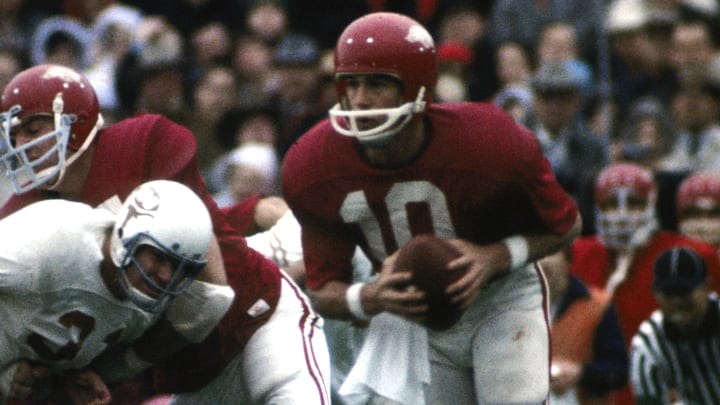Richardson Broke Color Barrier at Arkansas Coming to Town

Many of you will wonder why a column that references Juneteenth comes a few days after that holiday. My simple explanation: it seems altogether appropriate because even the pretense of equality for African Americans arrived late in this country and around most of the world.
Respect, acceptance and true equality for African Americans still isn't afforded by many but we hope and pray that day arrives soon.
Those thoughts flooded my brain following the death of Willie Mays, who got his start in the Negro Leagues before I was born and became my favorite childhood baseball hero in 1965 when he led the National League in home runs and did it again in '66 while winning the MVP Award.
Mays was the ultimate five-tool player, likely the first described in that manner, meaning he could extraordinarily hit, hit with power, run, field and throw. And the Say Hey Kid did it with flair like no other. He's still the benchmark for center fielders, offensively and defensively, and arguably the best player ever.
Acknowledging Mays' unparalleled all-around skills, Giants manager Leo Durocher once comically said of his young star: "If he could cook, I'd marry him."
For me and my best friend Tim in the mid-to-late 1960s, it was all about Mays, McCovey and Marichal, the Dominican Dandy. We didn't see color. We didn't see nationality. We didn't see any difference between those players and Mickey Mantle, Johnny Bench and Tom Seaver.
That's how I figured everyone thought when I moved to Arkansas from Indiana in 1971. Little did I know the Razorbacks didn't have their first black scholarship football player until the fall of 1969, when running back Jon Richardson played for the freshman team because freshmen weren't eligible for the varsity.
Richardson became a good friend later on, long before he died way too young of a heart attack at age 50 in 2002. Jon was kind, upbeat and always radiated the qualities that made him Frank Broyles' choice to break that barrier, though it came after Darrell Brown was the first black walk-on football player at Arkansas in 1965. Brown, who supposedly endured racial slurs and mistreatment during practice from both players and coaches, and away from the field, left the team to concentrate on academics after suffering a significant injury during spring practice in 1966. Brown earned his undergraduate degree at Arkansas in 1969 and graduated from the UA Law School in 1972.
Richardson was still dreaming of stardom with the Hogs when No. 2-ranked Arkansas hosted No. 1 Texas on Dec. 6, 1969. That's the day President Richard Nixon flew into Fayetteville on Marine One, landing next to Razorback Stadium on the football practice field.
That's the week when black students, including Brown, were protesting the UA band playing "Dixie" at pep rallies and every time Arkansas scored a touchdown that season. They demanded that insensitive practice end. After all, Dixie was the de facto national anthem of the Confederacy during the Civil War. Brown was actually shot in the leg the night before the Big Shootout.
Bill Clinton was a student at Oxford University in England in 1969, and had worked to avoid being drafted into the Army to fight in Vietnam. He was later a law professor at Arkansas, was elected governor five times, and elected in 1992 and '96 to serve as the 42nd President of the United States.
In his book, "Horns, Hogs, & Nixon Coming," author Terry Frei covers a lot of ground that includes both teams, Brown and the racial tensions on the UA campus, Clinton, Nixon and the coaches. It's an easy read and enjoyable for Hog fans — except the game's outcome, of course! The book's subtitle is "Texas vs. Arkansas in Dixie's Last Stand" and the jacket cover claims the Big Shootout "was the last major sporting event that featured two exclusively white teams."
Racial equality, and progress, have been long in coming, without a doubt. The character of men like Willie Mays and Jon Richardson made it easier for many to see the light.
Bob Stephens was a sportswriter and columnist in Northwest Arkansas from 1980 to 2003. He covered Razorbacks in three Final Fours, three College World Series, six New Year’s Day bowl games, and saw them win more track national championships than he can remember. He lives in Colorado Springs with his wife, Pati, enjoying the view of snow-capped Pikes Peak from their front window. Email him @bob.razorbacks@gmail.com.
HOGS FEED:
• Another wide receiver from Warren commits to continue tradition with Razorbacks
• Don't get hungup on commitments when real recruiting is getting signatures
• Razorbacks sprints into Olympic trial finals with top semifinal time
• Subscribe and follow us on YouTube
• Follow allHOGS on X and Facebook
